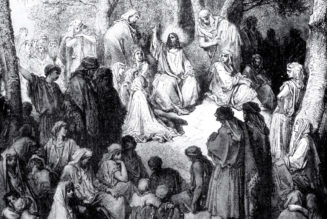Next to water, tea is the most common drink in the world. Over six billion cups of this earthy stuff are consumed each day. (Hearth & Field staff are personally responsible for a non-trivial number of them.) Steaming, iced, honeyed, unsweetened, black, green, white, or otherwise, tea is king, and has been for millennia. While coffee, soda and beer all play their role in hydration, libation, and social cohesion — with varying degrees of success — combined they equal less than half the world’s daily consumption of tea. All this from the Camellia sinensis, a small evergreen tree native to southern Asia.
The history of tea is connected to traditional Chinese folklore, which credits its cultivation to Shen Nung, “the Divine Farmer” a mythical emperor who is said to have brought agriculture to China around 2700 B.C. He introduced tea as a medicinal drink made from brewing the fresh or dried leaves of the Camellia sinensis. For the next two thousand years, the craft of raising and processing tea was perfected. By the first century, tea was a traded commodity and Chinese books describe how to buy and prepare various types of tea from regions throughout China. During the Tang Dynasty (A.D. 618 to907), tea was introduced to the Japanese, who used new growing and processing techniques to enhance its flavor. It wasn’t until the 1600s that tea eventually made its way to Europe, and even later when Assam tea, Camellia sinensis var. assamica was, was discovered and cultivated in India.
Today, the practices developed in China and Japan for growing, picking, processing, and brewing of tea have been handed down with little change. The harvest begins in late spring and, depending on the drying process, these fresh leaves become either white, green, oolong, or black tea.
- White tea is the least processed and the light color and docile flavor come from young leaves that are gently steamed and dried immediately after picking to prevent any oxidation, the natural process by which oxygen enters damaged cell walls and causes an enzymatic reaction. Due to the minimal processing, white tea has the highest amount of polyphenols, healthy plant-based antioxidant compounds, and the lowest amount of caffeine. Whites teas are delicate and have subtle, often sweet, floral notes.
- Green tea comes from leaves that are picked and heated to prevent oxidation. It is then rolled and baked to remove additional moisture, either through roasting in large woks (the traditional method in China) or through steaming on mats (the traditional method in Japan). Additionally, some teas are oven roasted or even smoked to create richer flavor profiles. The process of heating, rolling and drying produces a remarkable selection with a variety of tastes.
- Oolong tea comes from leaves that are picked and allowed to oxidize. After the leaves are between eight and eighty percent oxidized, depending on the type of oolong, they are rolled and dried. The flavor is more intense and the variety even greater than green teas. Many oolong teas have flavor profiles that change with multiple steepings.
- Black tea is the most processed. It is created from leaves that are completely oxidized. The fully withered leaves are dried in the sun or in large hot air dryers. The process is straightforward but the resulting taste differs depending on where the tea is from. Highland teas, such as IndianDarjeeling, have more floral overtones. The tease from lower, more tropical, regions, such as Assam, is darker and more full-bodied.
- Other true teas. Any tea from the Camellia sinensis plant is a true tea. In addition to those above, there are also fermented teas which are allowed to ferment and age in a variety of ways to produce unique and intense flavors. There are also commonly flavored teas, such as Earl Grey, which is black tea with oil of bergamot. Matcha is a popular type of Japanese green tea that is produced by grinding specific varieties of young tea leaves which have been shaded three weeks before harvesting to boost chlorophyll and L-theanine levels.
- Herbal teas. All other brewed concoctions from various herbs such as mint, roots like rooibos, or stems like yerba mate are technically tisanes, but better known as herbal teas. They are usually caffeine-free and require hotter and longer brewing times to get the full flavor.
The region, the time of picking, and the drying process all play into the quality, flavor, and mystique of tea. Some teas were traditionally reserved for imperial courts and gift giving, while others are ordered months ahead of the harvest at prices that reach into the thousands of dollars per pound.
Like all food, tea plays an important role in the building up and sharing of culture. Ceremonial tea drinking in China and Japan is a high art form that communicates respect for tradition and the value of hospitality. In China, the tea ceremonies are elaborate,with exaggerated hand movements rich with symbol and steeped in folklore. In Japan, the tea ceremony is more rigid, like a martial art kata, with exact movement, precision, grace, and poise. In Korea, tea drinking marks the celebration of major achievements and highlights the covenantal nature of marriage. Gift giving of particular teas to government officials, teachers, and family members is common practice in most Asian countries. From afternoon tea in the United Kingdom to sweet tea in the South, there is little doubt that tea also plays an important, though perhaps not as formal, role in the West.
How to Brew a Proper Cup of Tea
Whether you went nuts and bought some hard to pronounce tea dried in a Himalayan monastery, or bought the nicest looking box at your local supermarket, here are some simple steps to enjoying your tea. The details matter — don’t skip over them! Temperature and time are particularly important, as is storing tea in a well-sealed container.
For hot tea, plan on 1 tablespoon for 8 ounces of water; for iced teas double it.
Take your favorite mug, bowl, or jar, and your favorite pot or kettle, and use the chart below to brew with the best of them.
Join Our Telegram Group : Salvation & Prosperity






